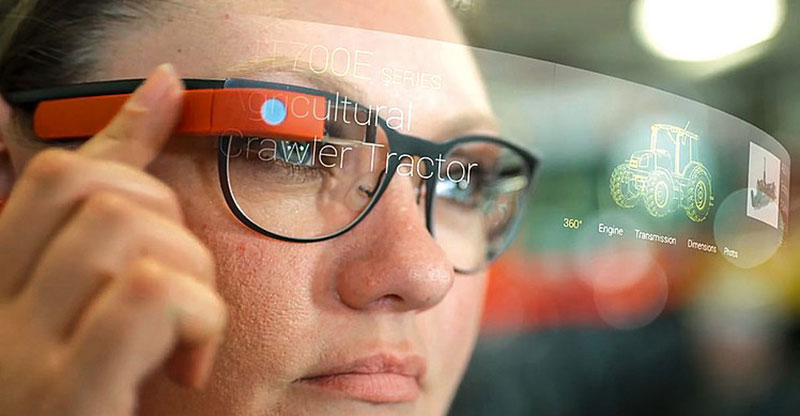Smart glasses and head-mounted displays have found their way into corporate operations in recent years. COVID-19 pandemic has forced on-site workplaces to change into mobile or virtual workplaces. Experts believe the next stage of development will be the transition to the distributed and immersive workplace.
Read more Wearables Make Workplaces Safer, A Long Running Study Confirms
A wearable computer is a computer system that is attached to the user’s body during use and supports the user in his work in the real world. Examples of wearable computers are smartwatches, smart glasses, smart gloves, etc. The use of these wearables simplifies interaction with coworkers, devices or machines and changes the qualification requirements for employees. Many companies have also recognized that wearables have the potential to increase work efficiency among employees, improve workers’ physical well-being, and reduce work-related injuries.
In Germany, as part of the “GeZu 4.0” project, the Virtual Dimension Center (VDC) Fellbach has now examined a study on the consequences of wearables and virtual technologies on the workplace of the future and identified current opportunities and risks. It has been shown that the workplace of the future will be more distributed, networked and more intuitive to use.
-
The distributed workplace
In the last few decades, we’ve seen the development of flexible workspaces. On-site workplaces have changed into mobile or virtual workplaces (where possible) since the COVID-19 pandemic. The next stage of development will be the transition to the distributed and immersive workplace. While an employee perceives himself/herself in the third person in the video conference, immersive workplaces allow the natural first-person perspective to be adopted. Companies that are already working in virtual reality believe that virtual workspaces will replace video conferences in the near future, reports OneToOne.

-
The networked workplace
In contrast to the distributed workplace, the employee is present at the on-site workplace. The digitization and programmability of the workplace will enable intelligent workspaces that connect the employee with the operational infrastructure via wearables, artificial intelligence, and the Internet of Things. Wearables will be networked with workstations, mobile devices, or electronic whiteboards within office buildings, campuses, co-working spaces, offices, conference rooms, break rooms, sales areas, and assembly lines. Here, too, the separation between private and business life will be more difficult to implement. The adoption of smart workspaces will therefore depend on the requirements of flexible work models as well as employee concerns about their privacy. Overall, the networked workplace will collect information about and through the employee and thus facilitate communication within the company, increase security and productivity and simplify documentation processes.
-
The intuitive workplace
The use of wearables will significantly change the way people interact in the workplace. Speech recognition is the technology with the greatest transformative potential today and will revolutionize the way we interact in the workplace. An important contribution to this can be attributed to the progress of artificial intelligence.
Read more Is Wearable Technology Going To Dominate Workplaces in 2021?
According to the VDC, many companies already believe that wearables have the potential to increase work efficiency among employees, improve workers’ physical well-being, and reduce work-related injuries. However, topics such as data protection, user-friendliness, security, guidelines, device costs, and the integration of wearables into the existing system are currently still in the way of mass use in the workplace.












